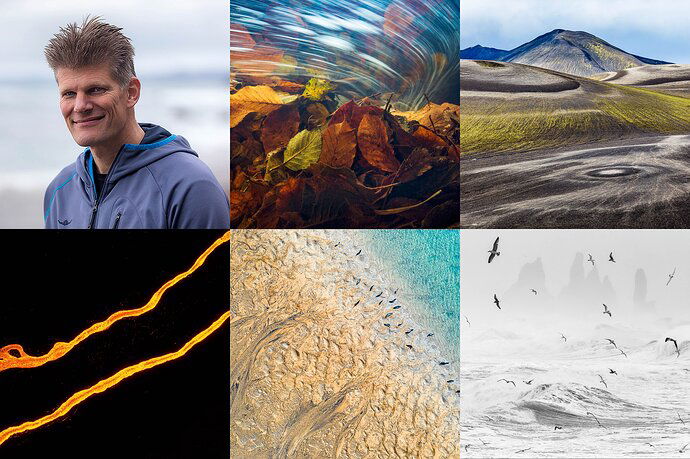If you’re not an NPN member yet, you can join our free tier to ask questions in the AMA or to get the full benefits of what we offer; you can join here.
Hi everyone, my name is Theo Bosboom, I am a passionate landscape and nature photographer from the Netherlands! In 2013, I gave up my career as a lawyer to pursue my dream of being a full-time professional photographer. I never looked back and am still enjoying the life of a full-time photographer very much! For me, nature photography is a perfect mix between exploring the natural world, creative expression and being in and close to nature.
Like many other landscape photographers these days, I do have a strong preference for intimate landscapes. But unlike many others, for me this preference has been there from the start and was not related to the Covid restrictions or the progression of my age and experience: wink: It is in my photographic DNA. This might be related to the fact that I live in the Netherlands. Moreover, it fits with my aim to take photos that are personal and distinctive and that have not already been taken thousands of times by others as well. Although it is great to occasionally capture a glorious wide landscape, I get more satisfaction from the images I have been able to make by looking carefully and using my imagination and creativity.
In my work I focus only on Europe, believing nature in my continent is underestimated and has much more wild nature to offer than people tend to think. At the same time, I can hereby avoid intercontinental flights and the associated large CO2 emissions.
I am passionate about working on projects and helped to set up the Project review session on NPN. Currently, I am working on a couple of projects myself, including a book project about European canyons. I am also passionate about photobooks. So far, I have published 4 books: Iceland Pure (2012), Dreams of Wilderness (2015), Shaped by the Sea (2018), and Back to Iceland (2022).
I do like photo competitions. I have been successful in prestigious competitions like WPOTY and EWPOTY and have been a judge in many competitions as well. Just like last year, I am in the judging panel of the NLPA.
For the AMA I would be open to discussing the environmental impact of landscape photographers. When I started as a professional photographer almost 10 years ago, I had little doubt about my positive impact on the earth. Now, a little older and perhaps a little wiser, I have a more nuanced opinion. I think that we landscape photographers should take a more critical look at our own impact and do more to actually keep the balance positive.
Although my own environmental behavior is still far from perfect, I am trying to find ways to reduce my impact on the environment (see the article I wrote about this for OnLandscape magazine:
https://www.onlandscape.co.uk/2022/09/7-ways-to-reduce-our-environmental-impact/).
What else is there to say? I am a proud father of two daughters of 13 and 11 and am happy to have a girlfriend who also loves nature and photography. I do love music and I am a sports fan as well.
I am very curious about your questions, don’t be shy!
Website: Theo Bosboom – Nature and landscape photography
AMA Rules:
- Please only ask one question by replying to this topic a single time, using the “Ask a question” button at the bottom. It’s also helpful to scroll to the bottom while reading the topic to make sure nobody else has asked the same question first before you ask.
- Please don’t ask more than one question so everyone gets a chance.
- Please do not reply to anyone else’s post. The only purpose of replies on this topic is to ask the author one question. Please create a new topic if you’d like to discuss a related topic in more detail.
Posts not following these rules may be removed by moderators to keep the Q&A flowing smoothly. Thank you!





